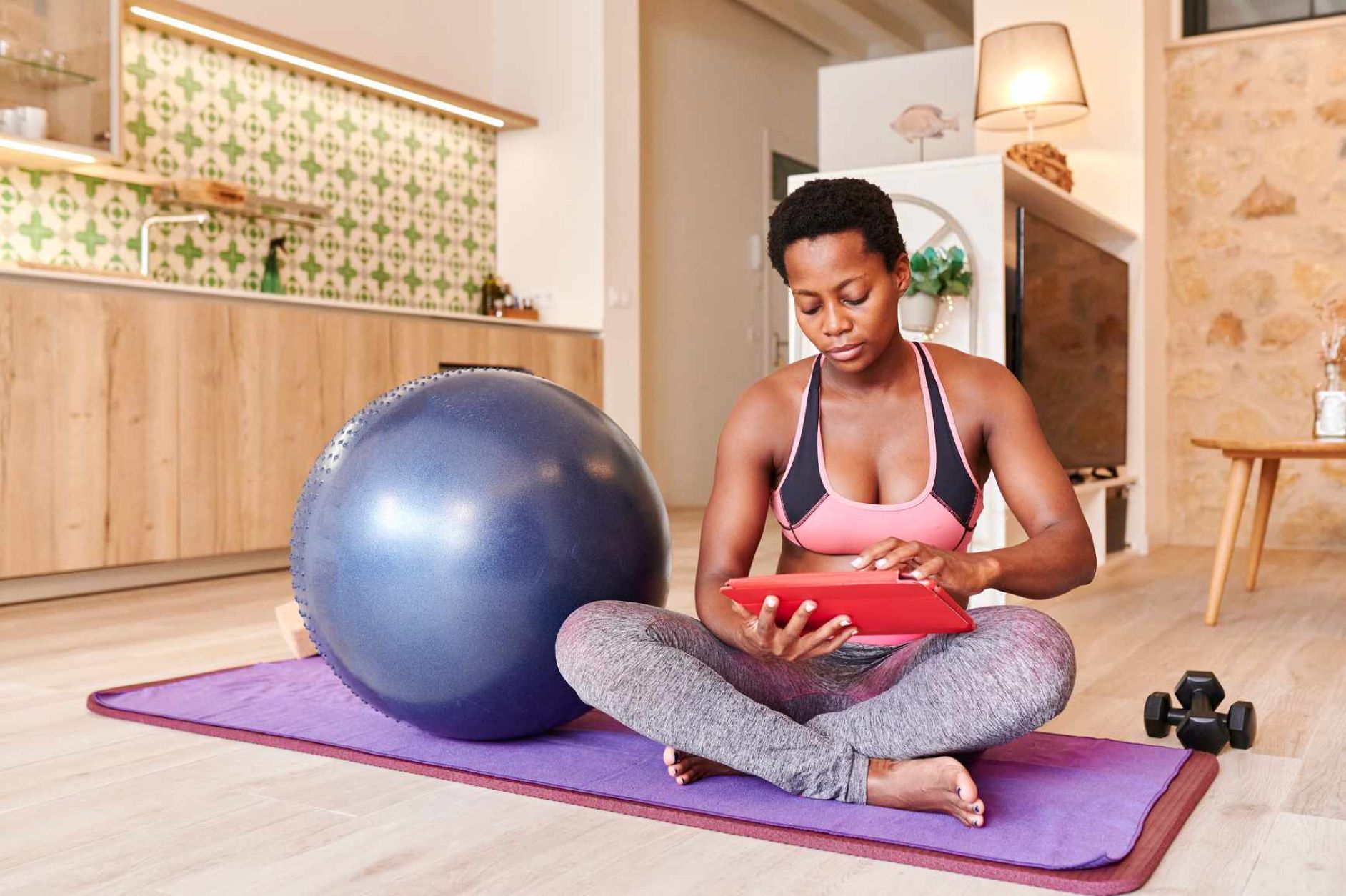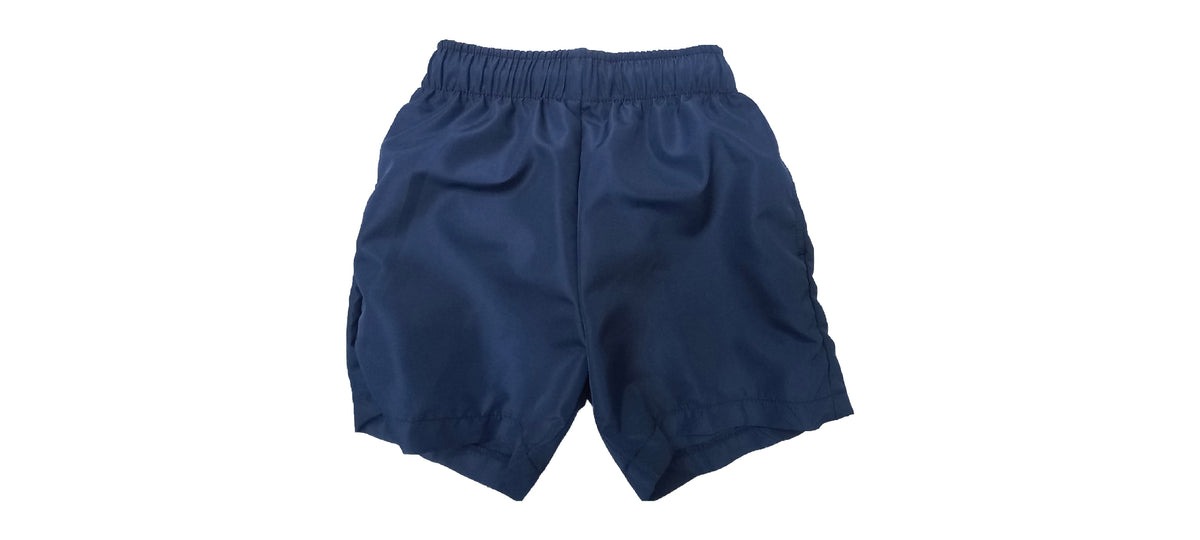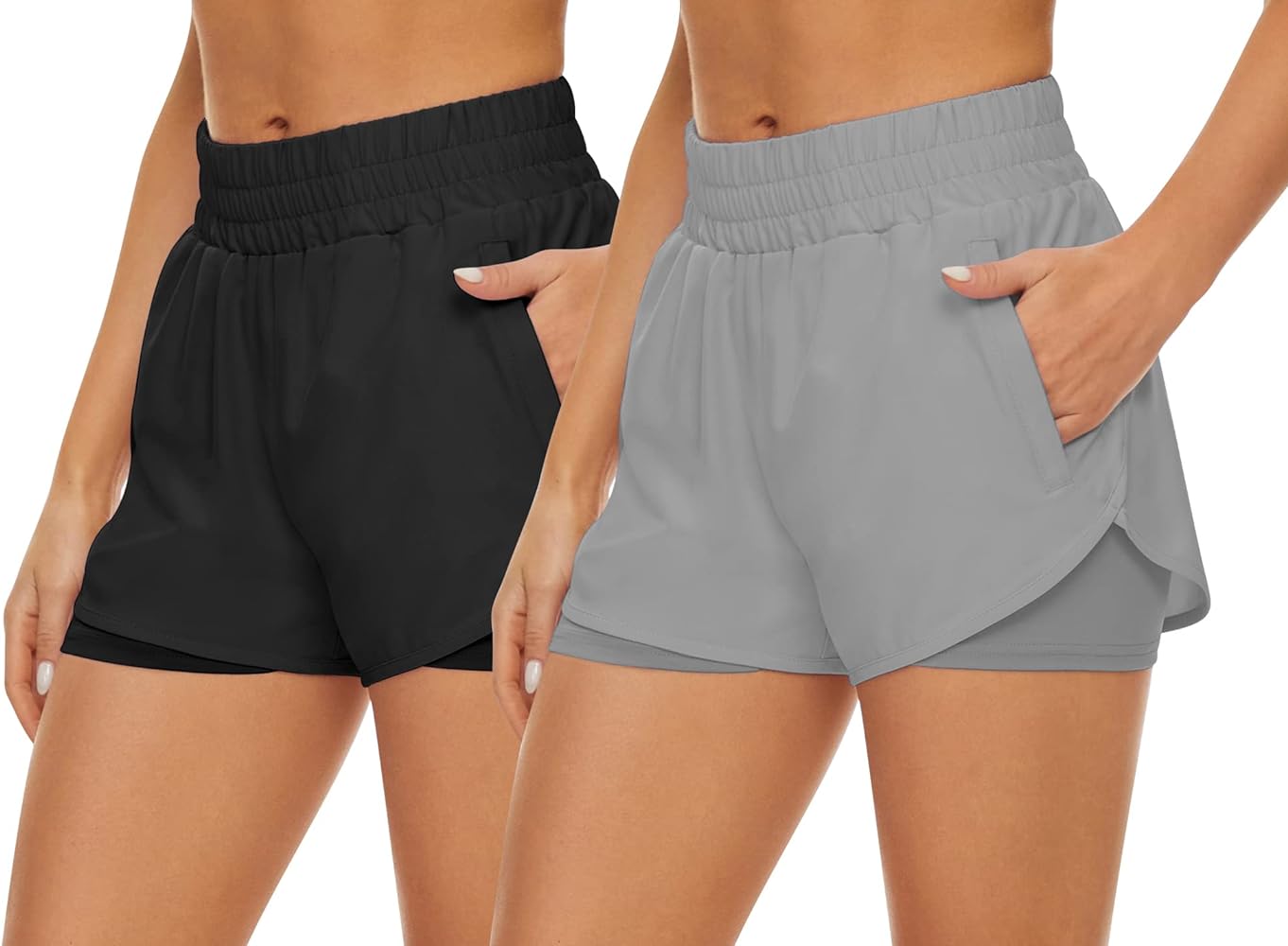

Types
What Kind Of Workout Should I Do
Modified: May 22, 2024
Looking to kickstart your fitness journey? Discover the different types of workouts to find the perfect fit for your goals and preferences.
Introduction
When it comes to fitness, finding the right workout can be a daunting task. With so many options available, it’s easy to feel overwhelmed and unsure of where to start. Whether you’re a fitness newbie or a seasoned gym-goer looking to switch up your routine, understanding the different types of workouts and how they can help you achieve your fitness goals is essential.
It’s important to note that there is no one-size-fits-all approach to fitness. What works for one person may not work for another. The key is finding a workout that aligns with your interests, abilities, and goals. Whether you’re looking to improve cardiovascular endurance, build strength, increase flexibility, or all of the above, there are options out there that can cater to your specific needs.
In this article, we will explore the various types of workouts available and how they can benefit you. From cardiovascular exercises that get your heart pumping to strength training routines that build muscle, we’ll break down the different options and help you find the perfect workout for your fitness journey. So, let’s dive in and discover the possibilities that await you!
Understanding Your Fitness Goals
Before embarking on any fitness journey, it’s crucial to identify and understand your fitness goals. What are you looking to achieve with your workouts? Are you seeking weight loss, improved athletic performance, increased muscle mass, or better overall health and wellness?
By clarifying your objectives, you can choose a workout routine that is specifically designed to help you reach those goals. For example, if your main objective is to lose weight and improve cardiovascular health, you may want to focus on cardiovascular exercises such as running, cycling, or swimming.
If you’re aiming to build muscle and increase strength, incorporating strength training exercises into your routine, such as weightlifting or bodyweight exercises, would be beneficial. On the other hand, if you’re more interested in improving flexibility and mobility, exercises like yoga or Pilates can be highly effective.
It’s also essential to consider your current fitness level and any limitations or injuries you may have. If you’re a beginner or have been inactive for a while, starting with low-impact workouts or seeking guidance from a professional trainer can help prevent injuries and ensure a safe and gradual progression towards your goals.
Lastly, keep in mind that your fitness goals may evolve over time. It’s okay to reassess and adjust your objectives as you progress on your fitness journey. Regularly evaluating and updating your goals will help you stay motivated and maintain a sense of purpose throughout your workouts.
By understanding your fitness goals, considering your current fitness level, and being open to adjusting your objectives, you can set yourself up for success and choose a workout routine that aligns with your aspirations.
Types of Workouts
When it comes to working out, there are numerous types of workouts to choose from. Each type offers unique benefits and targets different aspects of fitness. Understanding the various types of workouts can help you select the ones that align with your goals and preferences. Let’s explore some of the most common types:
Cardiovascular Workouts
Cardiovascular workouts, also known as aerobic exercises, are designed to increase your heart rate and improve cardiovascular fitness. These workouts include activities such as running, cycling, swimming, and dancing. Cardio exercises help burn calories, improve lung function, boost endurance, and enhance overall cardiovascular health.
Strength Training Workouts
Strength training workouts involve resistance exercises to build and strengthen muscles. This can be done with free weights, weight machines, resistance bands, or bodyweight exercises. Regular strength training helps increase muscle mass, improve bone density, enhance metabolism, and promote overall strength and functionality.
Flexibility and Mobility Workouts
Flexibility and mobility workouts focus on improving joint range of motion and muscle flexibility. Yoga, Pilates, and stretching exercises fall into this category. These workouts help improve posture, prevent injuries, enhance athletic performance, and promote relaxation and mindfulness.
High-Intensity Interval Training (HIIT)
HIIT workouts involve short bursts of intense exercise followed by periods of rest or lower intensity activity. This type of workout is known to be time-efficient and effective for burning calories and improving cardiovascular fitness. HIIT can involve a variety of exercises such as sprints, jumping jacks, or burpees.
Pilates and Yoga Workouts
Pilates and yoga workouts focus on mind-body connection, core strength, and flexibility. Pilates emphasizes precise movements and controlled breathing to strengthen the core, improve posture, and enhance overall body strength. Yoga combines physical postures, breathing techniques, and meditation to promote balance, flexibility, and stress relief.
These are just a few examples of the many types of workouts available. It’s important to experiment with different types, mix them up, and find the ones that you enjoy and that align with your fitness goals. Remember, variety in your workouts not only keeps things interesting but also challenges your body in different ways, promoting a well-rounded fitness routine.
Cardiovascular Workouts
Cardiovascular workouts, also known as aerobic exercises, are an essential component of any fitness routine. These workouts are designed to increase your heart rate, elevate breathing, and improve cardiovascular fitness. Engaging in regular cardiovascular exercise provides numerous benefits for your overall health and well-being.
There are various types of cardiovascular workouts that you can incorporate into your fitness routine. Here are some popular options:
Running:
Running is a high-impact cardiovascular exercise that requires minimal equipment. Whether you prefer outdoor running or utilizing a treadmill, this activity can help burn calories, improve muscular strength and endurance, and enhance cardiovascular health. Running can be easily adjusted to accommodate different fitness levels and goals, making it a versatile and accessible option.
Cycling:
Cycling, whether it’s indoor on a stationary bike or outdoor on a road or mountain bike, is a low-impact cardiovascular workout that targets the lower body muscles. Cycling helps improve cardiovascular endurance, strengthen leg muscles, and is a great option for those with joint issues or injuries. It can be done solo, with friends, or as part of indoor cycling classes, providing a sense of community and motivation.
Swimming:
Swimming is a full-body, low-impact cardiovascular workout that engages multiple muscle groups simultaneously. It provides an excellent cardiovascular challenge while being gentle on the joints. Swimming improves cardiovascular fitness, muscle tone, flexibility, and lung capacity. It’s a great option for individuals seeking a non-weight bearing exercise or for those who enjoy being in the water.
Dancing:
Dancing is a fun and engaging way to get your heart rate up and burn calories. Whether you prefer high-energy dance fitness classes like Zumba or hip-hop, or more traditional dance styles like ballet or salsa, dancing helps improve cardiovascular endurance, coordination, and flexibility. It not only provides physical benefits but also boosts mental and emotional well-being, allowing you to express yourself and let loose.
Engaging in regular cardiovascular workouts offers a range of benefits. It can help manage weight, reduce the risk of chronic diseases such as heart disease and diabetes, improve mood and mental health, enhance sleep quality, and boost overall energy levels. By incorporating different forms of cardiovascular exercise into your routine, you can keep your workouts exciting, challenge your body in different ways, and maximize the benefits for your cardiovascular health.
Strength Training Workouts
Strength training workouts are a vital component of a well-rounded fitness routine. These workouts involve resistance exercises that target specific muscle groups to build strength and increase muscle mass. Incorporating strength training into your fitness regimen offers numerous benefits for your overall health and functional abilities.
Here are some key aspects of strength training workouts:
Types of Strength Training:
Strength training can be done using various methods and equipment. Free weights, weight machines, resistance bands, and bodyweight exercises are all effective ways to engage in strength training. Free weights, such as dumbbells and barbells, provide versatility as they allow for a wide range of exercises that target different muscle groups. Weight machines, on the other hand, provide stability and isolation of specific muscles. Resistance bands are portable and can be used for resistance exercises anywhere. Bodyweight exercises, such as push-ups and squats, utilize your own body weight to provide resistance.
Benefits of Strength Training:
Strength training workouts offer a multitude of benefits. Building muscle helps increase your metabolism, as muscle tissue burns more calories at rest than fat tissue. This can aid in weight management and fat loss. Strength training also improves bone density, reducing the risk of osteoporosis and fractures. It enhances functional strength, making daily tasks easier and reducing the risk of injury. Strength training can also improve balance, posture, and overall body composition. Additionally, it contributes to improved mental well-being and self-confidence.
Progression and Form:
When engaging in strength training, it is essential to start with proper form and gradually progress in intensity. Learning the correct technique for each exercise ensures effectiveness and reduces the risk of injury. Gradually increasing the weight or resistance, as well as the number of sets and repetitions, will challenge your muscles and promote growth. It’s important to listen to your body and give it the necessary time to recover between workouts.
Variety and Periodization:
To continue making progress and challenge your muscles, it’s important to include variety in your strength training routine. This can include changing exercises, altering the order of exercises, modifying the weight or resistance, and adjusting the number of repetitions and sets. Periodization, which involves organized changes in training variables over time, is essential for optimizing results and preventing plateaus.
By incorporating strength training workouts into your fitness routine, you can improve your overall strength, increase muscle mass, boost your metabolism, and enhance functional abilities. Remember to consult with a fitness professional to design a customized program that suits your fitness level and goals.
Flexibility and Mobility Workouts
Flexibility and mobility workouts are an essential component of any well-rounded fitness routine. These workouts focus on improving joint range of motion, muscle flexibility, and overall mobility. Incorporating flexibility and mobility exercises into your fitness regimen offers numerous benefits for your physical performance, injury prevention, and overall well-being.
Here are some key aspects of flexibility and mobility workouts:
Types of Flexibility and Mobility Exercises:
There are various types of flexibility and mobility exercises that you can incorporate into your routine. Yoga and Pilates are popular options that not only help improve flexibility but also enhance strength, balance, and mindfulness. These practices involve a series of poses and movements that promote muscle stretching, joint mobility, and body awareness. Additionally, dedicated stretching exercises, such as static stretching or dynamic stretching, can be incorporated to target specific muscle groups and increase flexibility.
Benefits of Flexibility and Mobility Workouts:
Engaging in regular flexibility and mobility workouts provides a range of benefits. Improved flexibility allows for greater joint range of motion, enabling you to move more freely, perform exercises with correct form, and reduce the risk of injuries. Enhanced mobility helps improve athletic performance, as it allows for a greater range of movement in activities such as lifting, running, and sports. Flexibility and mobility exercises also help alleviate muscle tension, promote relaxation, and improve posture and body alignment.
Flexibility Training Techniques:
When performing flexibility exercises, it’s important to use proper techniques to maximize effectiveness and safety. Dynamic stretching involves controlled movements that gradually increase the range of motion, preparing the muscles for movement. Static stretching involves holding a stretch for a period of time, allowing the muscles to lengthen and relax. PNF (Proprioceptive Neuromuscular Facilitation) stretching techniques involve a combination of stretching, contracting, and relaxing targeted muscles to increase flexibility.
Frequency and Progression:
To improve flexibility and mobility, consistency is key. It is recommended to incorporate flexibility training exercises into your routine at least two to three times per week. Start with gentle stretches and gradually increase the intensity and duration as your muscles become more flexible. Progressing in your stretching routine helps maintain and improve flexibility over time.
By including flexibility and mobility workouts in your fitness routine, you can enhance your joint range of motion, muscle flexibility, and overall mobility. This can lead to improved athletic performance, reduced risk of injuries, better posture, and a greater sense of overall well-being. Remember to perform these exercises in a controlled and safe manner and listen to your body to avoid overstretching or causing injury.
High-Intensity Interval Training (HIIT)
High-Intensity Interval Training (HIIT) has gained immense popularity in recent years due to its time-efficient and effective nature. HIIT workouts involve short bursts of intense exercise followed by periods of rest or lower-intensity activity. This type of training challenges your cardiovascular system, boosts metabolism, and provides numerous fitness benefits.
Here are some key aspects of HIIT workouts:
Structure of HIIT:
HIIT workouts typically consist of short intervals of intense exercise, ranging from 20 seconds to a few minutes, followed by brief recovery periods. These intervals can be customized to suit your fitness level and goals. For example, you might engage in a 30-second sprint on a stationary bike or perform a set of burpees as the high-intensity phase, followed by 15 to 30 seconds of rest or lower-intensity exercise. This pattern is repeated for multiple rounds, typically totaling 10 to 30 minutes of workout time.
Benefits of HIIT:
HIIT workouts offer a wide range of benefits. First and foremost, they are highly effective for burning calories and fat due to the intense nature of the exercises and the subsequent elevated metabolic rate during recovery. HIIT also improves cardiovascular fitness by challenging the heart and lungs, enhancing their capacity to deliver oxygen to the muscles. This type of training can lead to improved endurance and stamina over time. Additionally, HIIT workouts are known to preserve lean muscle mass, making them an effective option for both fat loss and muscle maintenance.
Variety in Exercises:
HIIT workouts can incorporate a wide range of exercises, making them versatile and adaptable to different preferences and fitness levels. Exercises can vary from bodyweight movements like jumping jacks, squats, and lunges to equipment-based exercises such as kettlebell swings, rowing, or battle ropes. The key is to choose exercises that engage multiple muscle groups, allowing you to work at a high intensity during each interval.
Safety Considerations:
While HIIT can be intense and challenging, it is crucial to prioritize safety during these workouts. Warm-up adequately before starting a HIIT session to prepare your body for the higher intensity exercises. Pay attention to proper form and technique to prevent injuries. If you’re new to HIIT or have any underlying health conditions, it’s recommended to consult with a fitness professional to ensure the exercises are suitable for your specific needs.
By incorporating HIIT workouts into your fitness routine, you can optimize your workout time and achieve significant fitness gains. However, it’s important to listen to your body and adjust the intensity and duration of the intervals based on your fitness level and capabilities. With regular practice and progression, you can reap the benefits of HIIT and improve your cardiovascular fitness, burn calories, and elevate your overall fitness level.
Pilates and Yoga Workouts
Pilates and yoga are popular forms of exercise that focus on mind-body connection, core strength, flexibility, and overall well-being. While they have similarities, each practice has its own principles, movements, and benefits. Pilates and yoga workouts offer a holistic approach to fitness, promoting physical and mental harmony.
Here are some key aspects of Pilates and yoga workouts:
Pilates:
Pilates, developed by Joseph Pilates, is a system of exercises that target the deep core muscles, including the abdominals, back, pelvic floor, and glutes. Pilates combines precise movements with controlled breathing to improve strength, flexibility, posture, and body alignment. It emphasizes body awareness, stability, and the integration of mind and body. Pilates exercises can be performed on a mat or using specialized equipment such as the reformer, Cadillac, or Pilates chair.
Yoga:
Yoga is an ancient practice that originated in India and focuses on the union of mind, body, and spirit. While there are various styles of yoga, most practices involve physical postures (asanas), breathing techniques (pranayama), and meditation. Yoga helps improve strength, flexibility, balance, and relaxation. It offers a wide range of benefits, including stress reduction, improved mental focus, increased body awareness, and enhanced overall well-being. Yoga classes can be practiced in a traditional studio setting or in the comfort of your own home.
Benefits of Pilates and Yoga:
Both Pilates and yoga provide numerous benefits for physical and mental health. They can help improve core strength, increase flexibility, enhance posture, improve balance and coordination, and promote overall body toning. Regular Pilates and yoga workouts can also contribute to stress reduction, improved relaxation, increased body awareness, and a greater sense of mindfulness. Additionally, these practices can aid in injury prevention, rehabilitation, and overall functional fitness.
Choosing the Right Style and Practice:
There are various styles and practices within Pilates and yoga, each with its own emphasis and approach. It’s important to explore different styles and find the one that resonates with you and meets your specific needs. Some styles of yoga, like Vinyasa or Power Yoga, focus on dynamic movements and flow, while others, like Hatha or Yin Yoga, emphasize gentle stretches and relaxation. Likewise, Pilates can range from a more traditional approach to more contemporary variations like Pilates Fusion or Pilates with props. Experimenting with different styles will help you find the one that suits your goals and preferences.
By incorporating Pilates and yoga workouts into your fitness routine, you can experience a multitude of benefits for both your physical and mental well-being. These practices offer a balanced and mindful approach to exercise that can improve strength, flexibility, posture, and overall body awareness. Whether you choose Pilates, yoga, or a combination of both, you can enhance your fitness journey and cultivate a harmonious connection between your mind and body.
Choosing the Right Workout for You
Choosing the right workout for your fitness journey is crucial to ensure that you stay motivated, enjoy your exercise routine, and achieve your goals. With countless options available, it can be overwhelming to determine which workout is best suited for you. Here are some factors to consider when selecting the right workout:
Consider Your Interests:
One of the key factors in choosing the right workout is considering your interests. If you enjoy a particular type of exercise or sport, it’s more likely that you’ll stick with it long-term. Take a moment to reflect on the activities you enjoy or have always wanted to try. Whether it’s dancing, swimming, hiking, or martial arts, selecting a workout that aligns with your interests will make it easier to stay committed and engaged.
Assess Your Fitness Level:
Take into account your current fitness level when choosing a workout. If you’re a beginner or haven’t exercised in a while, starting with low-impact exercises or seeking guidance from a fitness professional can help prevent injuries and ensure a safe and gradual progression. If you’re more advanced, you may be looking for more challenging workout options that push your limits and help you achieve new goals. Be honest about your abilities and choose a workout that suits your current fitness level.
Determine Your Fitness Goals:
Identifying your fitness goals is crucial in finding the right workout for you. Whether you’re aiming for weight loss, increased strength, improved cardiovascular health, or overall well-being, different workouts cater to specific goals. For example, if your primary goal is to build strength, strength training workouts or activities like yoga and Pilates that emphasize muscle conditioning would be beneficial. Determine what you want to achieve through your workouts and select a workout that aligns with those goals.
Consider Your Schedule and Lifestyle:
Take into consideration your schedule and lifestyle when choosing a workout. Assess how much time you can dedicate to exercise and the flexibility of your routine. If you have a busy schedule, shorter and more intense workouts like HIIT may be a better fit. On the other hand, if you prefer a slower-paced and mindful approach, practices like yoga or Pilates may be more suitable. Choose a workout that fits into your daily routine and is sustainable for the long term.
Experiment and Listen to Your Body:
Lastly, don’t be afraid to experiment and try different workouts. Attend trial classes, explore online resources, or seek guidance from fitness professionals to get a taste of various workouts. Pay attention to how your body feels during and after each session. Listen to your body’s cues and adjust the intensity or type of workout accordingly. Finding the right workout often involves trial and error, so be open to exploring different options until you find the perfect fit.
Choosing the right workout for you is a personal process. Consider your interests, fitness level, goals, schedule, and listen to your body. By selecting a workout that you truly enjoy and that meets your needs, you can establish a fulfilling and sustainable fitness routine that will keep you motivated and help you achieve your desired results.
Creating an Effective Workout Routine
Creating an effective workout routine is essential for achieving your fitness goals, maintaining motivation, and ensuring that you make progress in your fitness journey. While individual preferences and goals vary, there are some key principles to consider when developing a workout routine that is both effective and sustainable. Here are some steps to guide you:
Set Clear and Realistic Goals:
Before diving into your workout routine, it’s important to set clear and realistic goals. What do you want to achieve through your workouts? Whether it’s losing a certain amount of weight, building strength, improving endurance, or enhancing overall fitness, having specific and attainable goals will provide direction and motivation.
Determine Frequency and Duration:
Consider how often and for how long you can realistically commit to your workouts. Aim for at least three to five sessions per week to see consistent progress. The duration of each workout will depend on your fitness level and the type of workout you choose. Start with shorter sessions of 20 to 30 minutes and gradually increase the duration as your fitness improves.
Vary Your Workouts:
To keep your workouts engaging and prevent plateau, include a variety of exercises in your routine. Mix cardiovascular exercises, strength training, and flexibility/mobility workouts. Incorporate different workout styles, such as HIIT, yoga, Pilates, or sports, to challenge your body in different ways and work on different muscle groups.
Progress Gradually:
Gradual progression is key to avoiding burnout and injury. Start with lower intensity exercises and gradually increase the intensity, duration, or weights as your fitness level improves. Pushing yourself too hard too soon can lead to overtraining, fatigue, or injuries. Always listen to your body and prioritize proper form and technique.
Take Rest Days:
Rest days are just as important as workout days. Allow your body time to recover and repair itself. Rest days help prevent overtraining and enable your muscles to grow stronger. Incorporate one to two rest days per week into your workout routine to give your body time to rest and rejuvenate.
Make it Enjoyable:
Choose exercises that you enjoy and that align with your interests. When you find joy in your workouts, you’re more likely to stick to your routine. Explore different activities, classes, or workout styles until you find what excites you. Consider incorporating workouts with friends or joining fitness communities to add a social element to your routine.
Track Your Progress:
Keep track of your workouts and progress to stay motivated and see how far you’ve come. Record your workouts, note the weights, reps, or distances achieved, and monitor changes in your body composition or fitness levels. This will not only provide a sense of accomplishment but also help you tweak and adjust your routine as needed.
Remember, an effective workout routine is one that is tailored to your goals, enjoyable, and sustainable. Be consistent, stay committed, and listen to your body. With the right approach and dedication, you can create a workout routine that transforms your fitness and overall well-being.
Conclusion
Choosing the right workout and creating an effective fitness routine is a personal and dynamic process. By understanding your fitness goals, considering your interests, fitness level, and lifestyle, you can select the workouts that align with your aspirations and preferences.
Whether you opt for cardiovascular workouts, strength training, flexibility and mobility exercises, high-intensity interval training (HIIT), or explore the realms of Pilates and yoga, each workout type offers unique benefits for your physical and mental well-being.
Along the way, it’s important to listen to your body, progress at your own pace, and make adjustments as needed. Keep your workouts engaging and enjoyable by incorporating variety and exploring different styles. Remember to set clear goals, track your progress, and allow for rest and recovery to optimize results.
Ultimately, the key to success is consistency and commitment. Find the workouts that ignite your passion, make you feel energized, and keep you motivated. Be patient with your progress and celebrate your achievements along the way.
With the right workout routine, tailored to your individual needs and goals, you can embark on a fitness journey that not only transforms your physique but also enhances your overall well-being. Stay focused, stay dedicated, and most importantly, have fun on your fitness journey!









